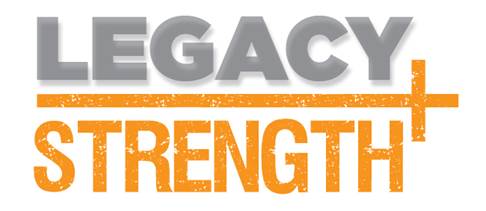Hey everyone! I’m back with another interesting write up for you all. This is an essay I recently wrote on Dan John’s request after his seminar. He had a lecture that discussed the need for hypertrophy training in individuals as they age. I had some questions for him and he knew I had the answer, he just had to drill it out of me, so he told me to write this essay. I was excited to take on the challenge and I tackled it with full force head on!
This essay revolves around the importance of “hypertrophy” and the role of it in our lives. By hypertrophy I am actually referring to thinking about exercise as “building” your body and not just “toning”. Build your suit of armor to protect yourself for LIFE!
Read on! Let me know what you think!
***************************************************
For: Dan John
February 9, 2011
Essay by: Joey Olivo
Forever Young: The Role of Hypertrophy as you Age
Essay based on 2011 Dan John Seminar Presentation at MBSC
The Questions: If the role of hypertrophy increases as we age, then where do strength and power fit in?
Are you saying that we need to work more in the higher rep ranges on the full body movements more frequently as we age?
What was Dan trying to teach?
The Response:
hy·per·tro·phy
1. excessive development of an organ or part; specifically :increase in bulk (as by thickening of muscle fibers) without multiplication of parts
Since the dawn of man, bigger muscles represented youth, vitality, power, strength, survival and success. They are what the women flocked to when seeking a protector, and they are what the men seeked when looking for the strength of a female to bare and raise children. Now fast forward to 2011 American society where obesity and other diseases caused by an increasingly sedentary lifestyle are plaguing the population. Physical weakness is so common that a strong man or woman is considered rare. Anyone over the age of 60 is expected to be frail and weak, why? Can that be prevented? Where did it all go wrong? What can we do to fix it? Is there a fountain of physical youth?
Bodybuilding has been a prevalent force in the health and fitness world for well over 30 years now. I am not too far off when I state that a good 80-90% of people who go to a gym or workout on their own are following bodybuilding style programs. Whether they know it or not is irrelevant, what matters most is: “Is it what they need when they need it?” Hypertrophy is just one particular component of exercise. Strength, power, flexibility and joint mobility are other qualities that have to be addressed as well. When is the need for hypertrophy most relevant in our lives? Is it an absolute necessity? Is there a place for this type of training to be put regularly into our programs? Why? This is a question that I am sure has been on the minds many people for years, especially on “this” side of the industry where we are so caught up in performance training and power development that it is easy to lose sight of the needs in certain populations as they age.
Coach Dan drew a graph that depicted the peak of the “role” of hypertrophy in your training at about age 22. After this “peak” the physical need for hypertrophy drops as you age up until about age 28. As you head into your 30’s you begin to lose muscle mass at an alarming rate therefore the role of hypertrophy training becomes increasingly important as time continues on. According to Coach Dan both hypertrophy and joint mobility follow the same process as we age, from age 30 and on they are elements that need to be addressed more and more. This illustrates the importance of their placement within your personal programming.
In the presentation Dan said “The sign of youth is tight buttocks.” Very true statement, because weak fragile, flat, saggy buttocks will get you nowhere in life fast. There was a study done by Robert Wolfe in March of 2010 titled “The Underappreciated Role of Muscle in Health and Disease” (http://www.ajcn.org/content/84/3/475.full.pdf), just some highlights from this study –
– “ Not surprisingly, individuals with limited reserves of muscle mass respond poorly to stress. For example, survival from severe burn injury is lowest in individuals with reduced lean body mass (13).
– Loss of muscle mass is also known to be detrimental to survival from cancer. For example, in patients with lung cancer receiving radiation therapy, the amount of body protein predicted recurrence. In those in whom body protein decreased, recurrence and, ultimately, survival was worse than in patients who were able to maintain or increase muscle mass (14).”
– “With cardiac and cancer cachexia, the loss of muscle mass is an important determinant of survival.”
– “Sarcopenia, the loss of muscle mass in old age, has a devastating effect on survival and quality of life.” An obvious point, however it is more difficult to recover lost muscle mass in old age than it is to mitigate the harm through acquiring muscle mass while still young.
– “It appears that exercise is more effective at preventing loss of muscle than of restoring lost muscle mass. Whereas exercise interventions in individuals with sarcopenia can successfully improve functionality (57), the reversal of the loss of muscle mass with aging has been more problematic. Further gains in physical strength and function resulting from exercise programs are often less effective in the elderly than would be expected in younger subjects undergoing the same training protocol. “
This research study states quite clearly how the maintenance of muscle mass is paramount to our youth, vitality, longevity and survival. According to Dan John’s Hypertrophy Graph maintenance of BOTH hypertrophy and joint mobility must increase as we age. Janda’s Tonic vs. Phasic principles indicates that “tonic” muscles need flexibility, and “phasic” muscles need the hypertrophy. It is up to us to make these qualities a priority as they are easily lost over time.
Hypertrophy and joint mobility are the fountains of physical youth. How do we apply them? The solutions to hypertrophy are vast. Bodybuilding comes to mind first, but it is only one of multiple avenues that can be taken. You can throw weight overhead with the explosiveness of Olympic lifting, you can grind heavy weight with the force of a powerlifter, ballistically hoist weights with the snap and tension of kettlebell training, or even go for reps with the best machine ever created – bodyweight for resistance. Whatever your method, use it and use it consistently.
Joint mobility encompasses the different variations of flexibility and the mindful movement of the joints through their full ranges of motion. This can be found through yoga, certain martial arts, tai-chi, Z-health joint mobility drills. Anything you choose but move, lift and stretch to keep yourself forever young.
Dan taught us to take care of your big rocks first, groove your movement patterns to check for flexibility mobility and stability, grind the movement to build up strength in the muscles, work the symmetry to look for imbalances then work on explosive movements to maintain power. You have to find where you stand in that process, when in doubt start at the beginning.
“Look with favor upon a bold beginning” – Virgil
The older you get, the more hypertrophy training has to be placed in more consistently throughout your training year. There is still room for strength and power, but the need for building and just maintaining quality muscle tissue is at the top of the list. As you age, continue to build yourself a suit of armor and the other qualities will be more easily attainable. Lift heavy, train hard, live with passion and stay strong!
************************
Hope you enjoyed it!
Joey





